Supreme Ruler: Cold War – Review
by Dom
|
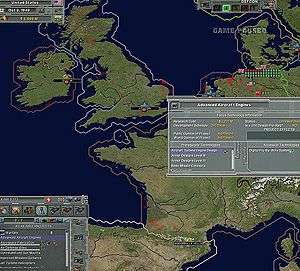 Ever since I was old enough to know how to operate a mouse and keyboard, I’ve loved the RTS genre. I am a belligerent console user – unless forced, I will stick by my pad, building my gamerscore, neglecting my dust-ridden laptop as it flickers with a half-open Word document, craving my attention. However, I will set aside my preferences for anything RTS; I was broken into this world by the noob-friendly Command & Conquer series, educated in its ways by the Age of Empires, err, empire and intellectually galvanized by the incredible Civilisation series. Since then, a natural progression into the more core games was inevitable; not only did an interest in micromanagement manifest, but also the mechanically deeper macromanagement (where you manage the economy and try and free up time/resources for yourself to more adequately run your empire).
Ever since I was old enough to know how to operate a mouse and keyboard, I’ve loved the RTS genre. I am a belligerent console user – unless forced, I will stick by my pad, building my gamerscore, neglecting my dust-ridden laptop as it flickers with a half-open Word document, craving my attention. However, I will set aside my preferences for anything RTS; I was broken into this world by the noob-friendly Command & Conquer series, educated in its ways by the Age of Empires, err, empire and intellectually galvanized by the incredible Civilisation series. Since then, a natural progression into the more core games was inevitable; not only did an interest in micromanagement manifest, but also the mechanically deeper macromanagement (where you manage the economy and try and free up time/resources for yourself to more adequately run your empire).
Now, the main lure of the general Supreme Ruler franchise is the minutiae of, literally, every aspect. The game screen is effectively bordered with context sensitive menus; on the bottom-left, you’ve got, well, you. There are a series of tabs that show information about your financial, military, research and political-diplomatic standings – within these tabs are yet more tabs that go into such incredible depth that, after about four hours of gameplay, I’ve still yet to use (or even examine) all of them. To the right of the screen, you have a vertical border that displays real-time alerts; these can relate to anything from your failed espionage missions (I’ve not succeeded in one, yet) to your Ceasefire Declarations that have been pushed through. Top-centre, you’ve got your DEFCON meter – basically an indicator of the current threat level; 1 being World Peace, 5 being World War. Top-right, you have the (newly added) Sphere of Influence – an intricate tool that allows you to attempt victory by crushing the opponent’s dominion.
The Sphere of Influence adds an interesting turn to the standard RTS game – rather than trying to crush your opponent with pure military might (something I have never personally relished in these sort of games), you are given the choice to try and drown out their power by allying yourself with other nations, bolstering your trade routes, strengthening your power in the UN – all of these aspects come together into one slider-bar style graph that show you just how much global power you wield (or don’t). Hover over it and a pop-out box tells you what countries are neutral, which are leaning to your political siding, and which are vehemently set against you.
Now, as for gameplay… well, where do I start? I’ve never been a World Leader, but from what I can infer, this game is as utterly stressful (if not more so) than any premier’s job. All the little bells and whistles disguised as menus are lovely, yes, but they hide the fact that, really, the game can get incredibly dull.
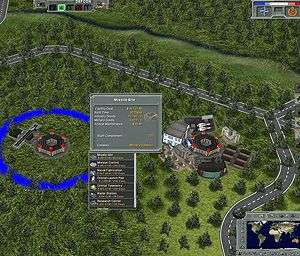 That’s a broad statement, so let me explain – you get the opportunity to set your game speed. This is made very easy because the option is set neatly against your faction label (top left of the screen). Most of the time, you’ll have the setting on ultra-insanely-very-fast, because otherwise nothing happens. Nothing happens at all. I had the speed set to normal and, when first getting to grips with the system, spent a solid ten minutes watching the build cycle for some barracks to complete. It should be noted, however, that when you set it to ultra-mega-silly-fast, this is only perhaps halved; gameplay often feels like a slow slog against time in general. (Which, to be fair, is what most World Leaders often face before their careers come crashing to their feet around them in an amalgamation of affairs and corruption).
That’s a broad statement, so let me explain – you get the opportunity to set your game speed. This is made very easy because the option is set neatly against your faction label (top left of the screen). Most of the time, you’ll have the setting on ultra-insanely-very-fast, because otherwise nothing happens. Nothing happens at all. I had the speed set to normal and, when first getting to grips with the system, spent a solid ten minutes watching the build cycle for some barracks to complete. It should be noted, however, that when you set it to ultra-mega-silly-fast, this is only perhaps halved; gameplay often feels like a slow slog against time in general. (Which, to be fair, is what most World Leaders often face before their careers come crashing to their feet around them in an amalgamation of affairs and corruption).
When you eventually get your country on its feet and building things at enough speed to see some actual difference, gameplay starts in earnest. One thing that strikes me about Supreme Ruler is the sheer amount of options open to you: at first glance, it all seems pretty superficial – you are given a series of options and then you can choose to act on them how you wish. However, for those of you who are particularly cunning, there are some seriously shrewd ways for you to expand your empire. Take, for example, the tactic I tried in my first playthrough; sending a team of spies to Britain to assassinate their leader, hoping, in their despair and hour of need, that they’d turn to me and I could them out with my supplies and military. My plan was to then overtake the country by proxy (which I am assured would work). Alas, Britain discovered my spies, assumedly interrogated them and turned on me. The swines! I was promptly pitted against most of NATO and the Warsaw Federation. You can guess the (eventual) outcome.
 |
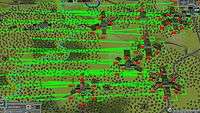 |
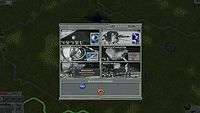 |
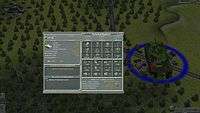 |
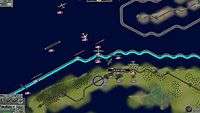 |
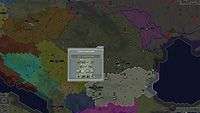 |
Another thing that stands out (very, very much) in SR:CW is the odd paradox between how much micromanagement there is to how little you actually need to do with it. The best way of explaining this would be to use the example of America – I commonly found my map positioned over either New York, Washington DC, Honolulu or some obscure military base up near Canada. Considering this country has over one hundred cities, this seemed pretty limited. Now, within each of these cities, you can create build cycles or set up unit queues – if you tried to do this individually for each city, each game would take you easily over a century, real-time. There’d be too much pausing and unpausing, for a start.
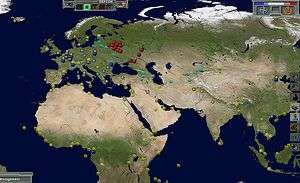 To combat this, you can select the “Fabrication” tab – this allows you to delegate your duties to the various Cabinet members around the world (if you control colonies overseas). To put it as simply as possible (because, honestly, I haven’t got a clue how it actually works), select a command from the pop-out tab and you can automate your military to focus on different things; from offense to defence, research to acquiring tech (by bribing or spying on other countries/factions). This frees up a lot of time, and, when doing this I often found myself just wandering around the map, looking for something to do.
To combat this, you can select the “Fabrication” tab – this allows you to delegate your duties to the various Cabinet members around the world (if you control colonies overseas). To put it as simply as possible (because, honestly, I haven’t got a clue how it actually works), select a command from the pop-out tab and you can automate your military to focus on different things; from offense to defence, research to acquiring tech (by bribing or spying on other countries/factions). This frees up a lot of time, and, when doing this I often found myself just wandering around the map, looking for something to do.
Combine this with the system that allows you to delegate almost all micromanagement jobs to your Cabinet and you often find yourself sitting around waiting for something to happen. If you click on the little businessman figure that represents your Cabinet member, you will receive a series of options that allow you to choose how each large chunk of your country is governed – you get a representative for the Military, your Financial Department, your Head of State, your Production and your Research. Granted, there are an awful lot of options available to you – and, as such, an almost endless amount of combinations. Looking at it one way, you can never get bored experimenting with every different combination (Social Growth for Financial vs. Economic Research policies or Tech Research against reduced spending and high taxes, for example). However, you could argue that there is very little to do – once you designate the selected roles to your respected underlings, you could be sat watching, twiddling your thumbs, waiting for something to happen.
This happened for me on more than one occasion – from the campaign, playing as the USA, to the “Sandbox Mode” (where I played as our fair isle) – once I figured out how to set up my chain of command, I found myself merely floating around the screen like some vacuous and forgotten Godhead, trying to alter my underlings commands, one at a time. I felt like the clueless leader of a recently installed proxy-Government; all of my duties were phantom and all of my subjects carried out their tasks with or without my permission. It is the wide gulf between the two types of play that can confuse you.
I often found myself (after declaring war, or becoming involved in a war, at least) being steam-rollered if I attempted to manage all of my troops and colonies myself. Since there are so many cities, and so many places to spawn your various troops from, you can easily forget that you created that tank regiment in Detroit, and so it’ll just sit there, doing nothing, whilst some Russian/Chinese bomber planes make quick work of Washington DC. On the other hand, if you delegate all of your duties, you could just as easily sit back and watch a whole war unfold before your eyes. It’s like watching a retrospective of news reports between 1949 and 1999, if the situation deteriorated so much worse than it did.
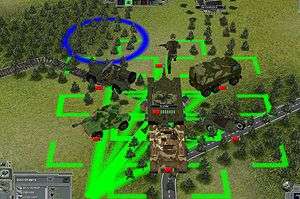 You have the opportunity to alter the difficulty settings to reflect your play style (read: preferred length of game). It became very difficult to find any fixed difference between difficulties and you get one for each area of the game – military difficulty, political difficulty, etc. The only obvious thing I could find that made each difficulty setting different was the resistance shown in the designated area – take, for example, the political difficulty; on easy, you could make your sphere of influence grow pretty quickly. On hard, with the exact same tactics, your sphere would grow, but slower. Infer from that what you will, but – for me – it just makes playing on harder difficulties tedious, not more challenging.
You have the opportunity to alter the difficulty settings to reflect your play style (read: preferred length of game). It became very difficult to find any fixed difference between difficulties and you get one for each area of the game – military difficulty, political difficulty, etc. The only obvious thing I could find that made each difficulty setting different was the resistance shown in the designated area – take, for example, the political difficulty; on easy, you could make your sphere of influence grow pretty quickly. On hard, with the exact same tactics, your sphere would grow, but slower. Infer from that what you will, but – for me – it just makes playing on harder difficulties tedious, not more challenging.
Graphically, the game is what you’d expect from a top-down game in general – although you are given the opportunity to zoom in, you’ll find yourself doing it rarely. This is mainly because you need to see the whole scope of things, but also because, when you get that close to the units and the buildings, you can see just how blocky they are. This isn’t a bad thing, however, because you rarely have any need to get that close – the satellite imaging and troop counters do the trick perfectly, especially when you’ve got the sparse graphics settings ramped up to the maximum. The graphics card on my laptop isn’t all that powerful (my laptop was designed for office work), but the game ran without a glitch, and when the options were turned up fully, there wasn’t even a hint of lag.
Aurally, the game isn’t fantastic – but neither is it poor. It’s decidedly average; the USSR soundtrack uses the Dance of the Knights song by Prokofiev (more commonly known as The Apprentice soundtrack), and the USA campaign uses the standard soaring, stubborn soundboard you’d expect to relate to anything associated with US dominion.
So. The game isn’t bad. But, if you’re not a fan of the RTS genre at large, then it’s probably best avoided. As mentioned earlier, I like to think that I know my way around these games, and I found it incredibly difficult to get going when I first started playing. There is no tutorial option, so if you’re not used to the layout of the Supreme Ruler games, you can very easily find yourself clicking around the screen, cluelessly.
If this game should be marketed to anyone, it should be school-kids (especially at A-level age). If there are any neo-modernistic teachers reading this, I implore you to include the game in your lesson plans from this day forth; I have a general interest in history (as much as any student who opts to take it for A-level) and I found this game teaching me things I either didn’t know, or expanding (massively) on things I had only basic knowledge about. Granted, a lot of the information is presented behind varying levels of facade (otherwise the game wouldn’t work), but once you work out what’s been said to fix up your scenario, you can find yourself taking in a lot of information about the world from 1949 onwards.
Pros- Vast array of options to explore and take advantage of.
- Every micromanager's dream come true.
- Historically viable and educational, if you can separate game context from reality.
- Lack of tutorial option leaves newcomers confused and frustrated.
- Not the prettiest thing you'll ever see on your monitor, close up.
- Soundtrack can get a bit repetitive, especially in the lengthy campaign modes.
This game is good – playable, interesting and there’s a lot of depth there if you can click through the menus and extract it. The game is marketed as a “geo-political” RTS, and it shows. If your reason for buying this is based on wanting to create a world-conquering army and roll across the globe with it, go ahead, but just be aware you’ll have a much more enjoyable (and shorter) game if you use all of your tactics together. Once I got the hang of political relationships and the diplomacy aspect, I only ever used the military to fall back on if something awful happened.
...which I think is something a lot of our world leaders could learn from.
Last five articles by Dom
- Defining Games, Part I: ‘Culture’
- Best of 2012 - 10 Games and Their Classic 8-Point Story Arcs
- 10 Games and Their Classic 8-Point Story Arcs
- Tekken Tag Tournament 2 - Review
- Tom Clancy’s Ghost Recon: Future Soldier - MP, Campaign, and Film Preview















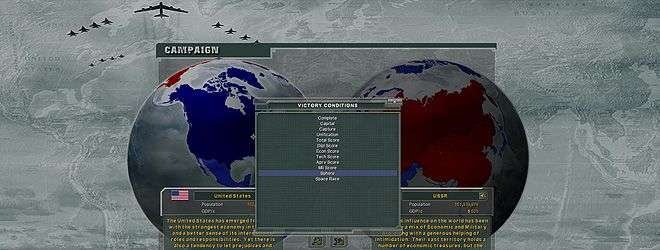
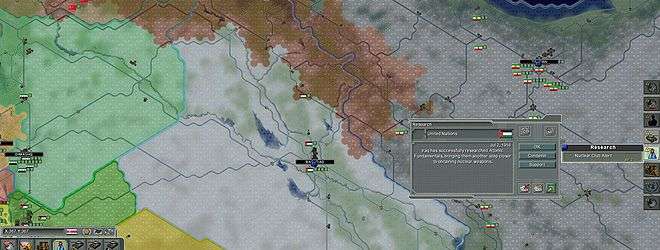
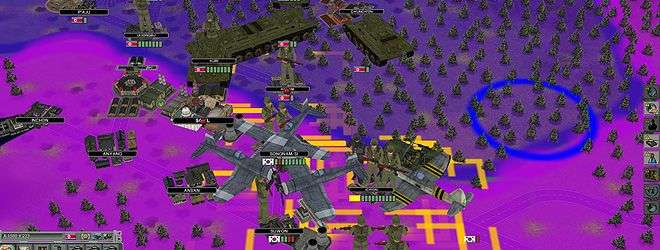





Good review, enjoyed reading through this. Having not played a PC RTS of this depth in quite some time I think this could be quite a shock to the system – even Tropico 3 on the Xbox360 had my head dazed with micro-management. Still, after reading through the review I am tempted to have a look at the series, I can never resist the chance to be a supreme overlord of the world!
Good review, Dom! I have to admit the game has me intrigued, but if it’s that slow I’ll stick with Evil Genius for my RTS fix